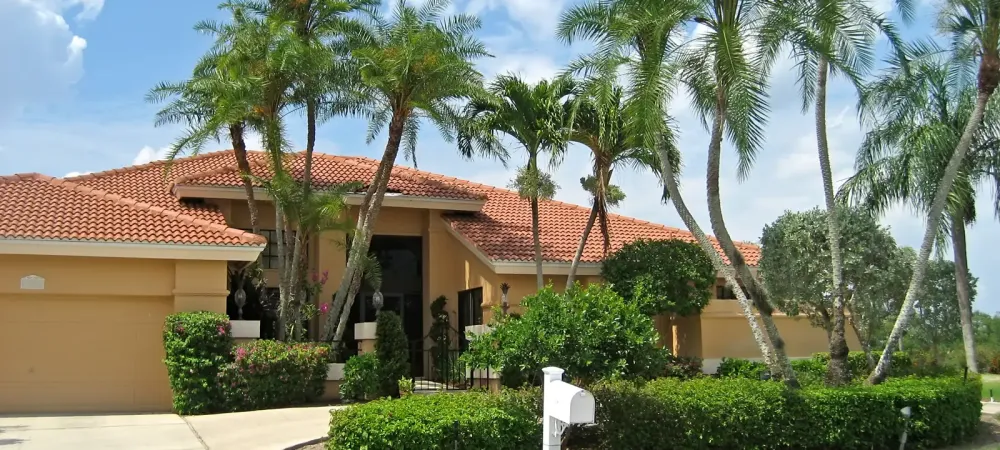Biting Spiders in Southwest Florida

Southwest Florida is home to a variety of spiders, many of which are harmless. However, there are a few species that can bite when provoked. While spider bites are often rare and generally not dangerous, it’s important to be aware of the types of spiders that could potentially bite in the region and what to do if you encounter one. Here are the common biting spiders of Southwest Florida, what their bites look like, and how to handle them.
Which Kind of Spiders Will Bite?
Not all spiders bite humans, and even among those that do, many bites are defensive and not harmful. But in Southwest Florida, there are a few species that are more likely to bite if they feel threatened. Here’s a rundown of the most common types of biting spiders in the region:
Common House Spiders
Common house spiders are frequently found inside homes, hiding in corners or under furniture. They rarely bite, and when they do, their bites are generally harmless. Most people might experience slight itching or redness at the bite site, but no serious symptoms. Because they are the most common spiders found in homes, you are generally more likely to come in contact with these spiders than any others on this list.
These spiders are small and brownish with long, delicate legs. They prefer to avoid human contact and only bite in self-defense, such as when they’re trapped in clothing or shoes. Key identifiers of this type of spider include:
- Typically light brown to gray with darker mottling.
- The body is oval and somewhat flattened.
- They lack bright markings or distinct colors that can confuse identification.
- Legs are long and slender, usually longer than the body.
Wolf Spiders
Wolf spiders are larger than common house spiders and are hairy. These spiders are ground-dwellers and tend to hunt rather than spin webs. While they can look intimidating due to their size, their bite is not medically significant.
Wolf spider bites can cause mild pain, redness, and swelling, similar to a bee sting. People allergic to spider venom may experience more severe reactions, but this is rare. Wolf spiders are typically brown with distinct dark markings and fast-moving legs, which can make them seem more aggressive than they are. Key identifiers of this type of spider include:
- Typically brown, gray, or tan, with darker markings.
- Robust and hairy, giving them a somewhat rugged appearance.
- The legs are banded or have dark stripes, contributing to their camouflage.
- They are fast and agile hunters, often seen running swiftly rather than spinning webs.
- They often exhibit a characteristic behavior of “playing dead” when threatened, which can also aid in identification.
Widow Spiders
In Southwest Florida, the Southern Black Widow and the Brown Widow are the two widow species that are more concerning due to their venom. Black widows, identified by their shiny black bodies and distinctive red hourglass shape on their abdomen, are known for their potent venom. Brown widows have a similar appearance, but have an orange or yellow hourglass marking instead.
A black widow bite can cause muscle pain, cramping, sweating, and nausea. It’s important to seek medical attention if bitten, though fatalities are extremely rare. The brown widow, slightly less toxic, also has a more timid nature and tends to avoid humans. Their bites can cause similar, though typically less severe, symptoms. Key identifiers of these spiders include:
- The body is bulbous, and the legs are long and thin.
- An hourglass marking on the underside of the abdomen.
- Builds irregular, tangled webs in dark, undisturbed areas.
- Adult females typically measure about 1.5 inches (38 mm) in diameter, including their legs.
Brown Recluses
Though rare in Southwest Florida, brown recluse spiders have been occasionally spotted. These spiders are small, with a violin-shaped mark on their back, and are known for their necrotic venom.
A brown recluse bite can initially appear as a small red bump but may develop into a painful, ulcerating sore over time. This necrosis can be dangerous if not treated properly, though serious complications are rare. Immediate medical treatment is crucial to manage a brown recluse bite. Key identifiers of this spider are:
- Typically light brown to yellow-tan with a smooth, somewhat glossy appearance.
- A characteristic dark brown or black violin-shaped marking on the upper surface of the thorax (the area just behind the eyes).
- Six eyes arranged in pairs (rather than the typical eight eyes found in most spiders).
- Long, slender legs that are typically a shade lighter than the body.
What Does a Spider Bite Look Like?
Most spider bites resemble insect bites, causing redness, slight swelling, and itching. Bites from more dangerous spiders, such as the widow spiders or brown recluse, may have distinct features. Black widow bites may result in two puncture marks and cause muscle cramping and sweating, while brown recluse bites can lead to a blister surrounded by a red ring, followed by tissue breakdown in severe cases.
Keep an eye on the bite for signs of infection or worsening symptoms such as increased pain, spreading redness, fever, or nausea, and seek medical advice if these occur.
What to do About a Spider Bite
If you are bitten by a spider, follow these steps to manage the situation:
- Clean the area: Gently wash the bite site with soap and water to prevent infection.
- Apply a cold compress: Reduce swelling and pain by applying a cold compress to the bite area for 10 minutes at a time.
- Take pain relievers: Over-the-counter pain medications like ibuprofen or acetaminophen can help alleviate discomfort.
- Watch for severe reactions: If you experience severe pain, cramping, difficulty breathing, or other systemic symptoms, seek medical attention immediately, especially if you suspect a black widow or brown recluse bite.
- Don’t panic: Most spider bites are harmless and will heal on their own within a few days.
For more information about venomous spiders in Florida, check out the Florida Department of Agriculture and Consumer Services.
Preventative Spider Control in SWFL
While most spiders in Southwest Florida are harmless, it’s always a good idea to be aware of the few species that can bite and to know what to do if it happens. The best thing you can do to protect yourself is to hire a professional pest control company that provides preventative spider control services. Here at Tony's Pest Control, we offer comprehensive spider control in Southwest Florida that will keep you and your family protected. You can get started with a free quote now!
